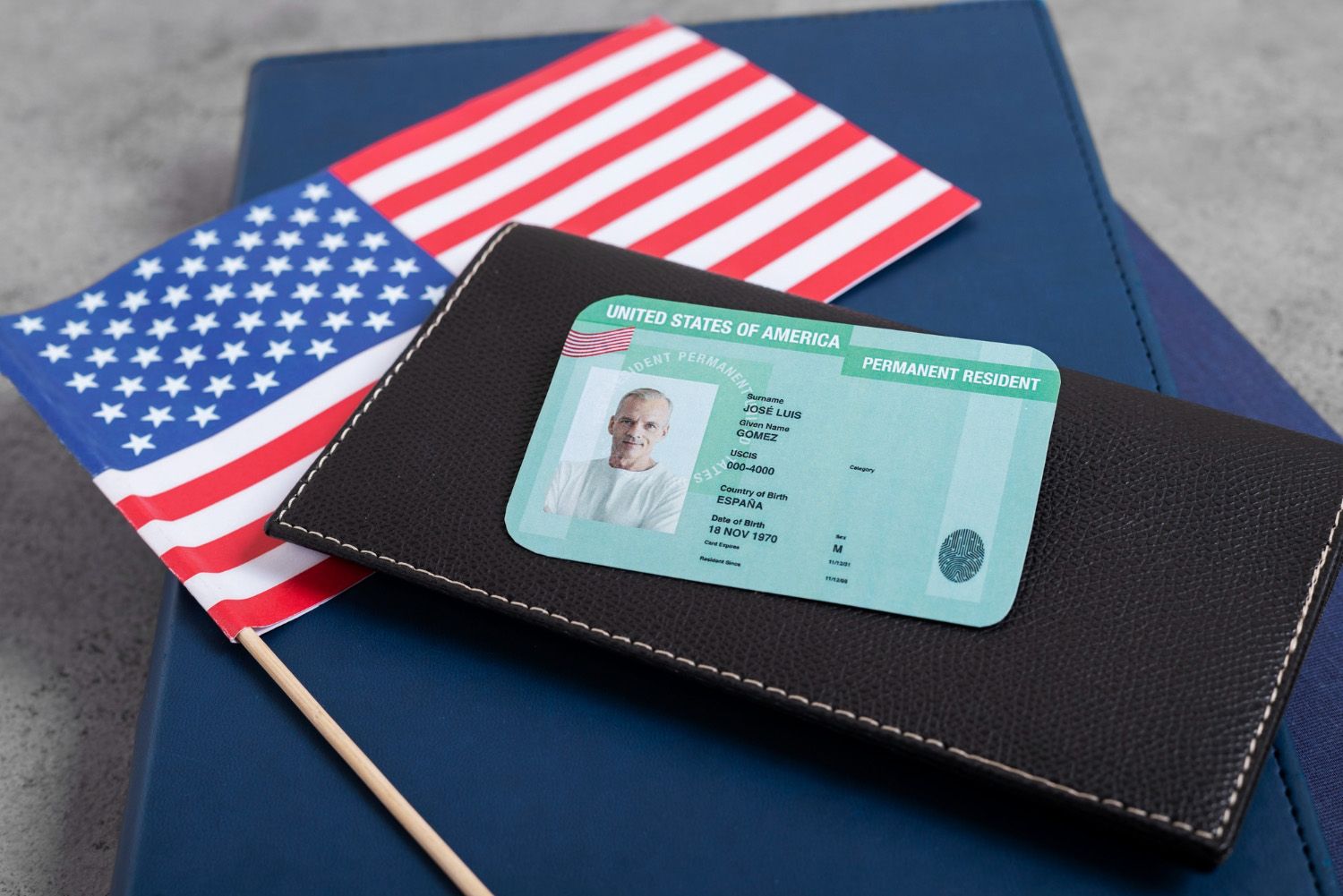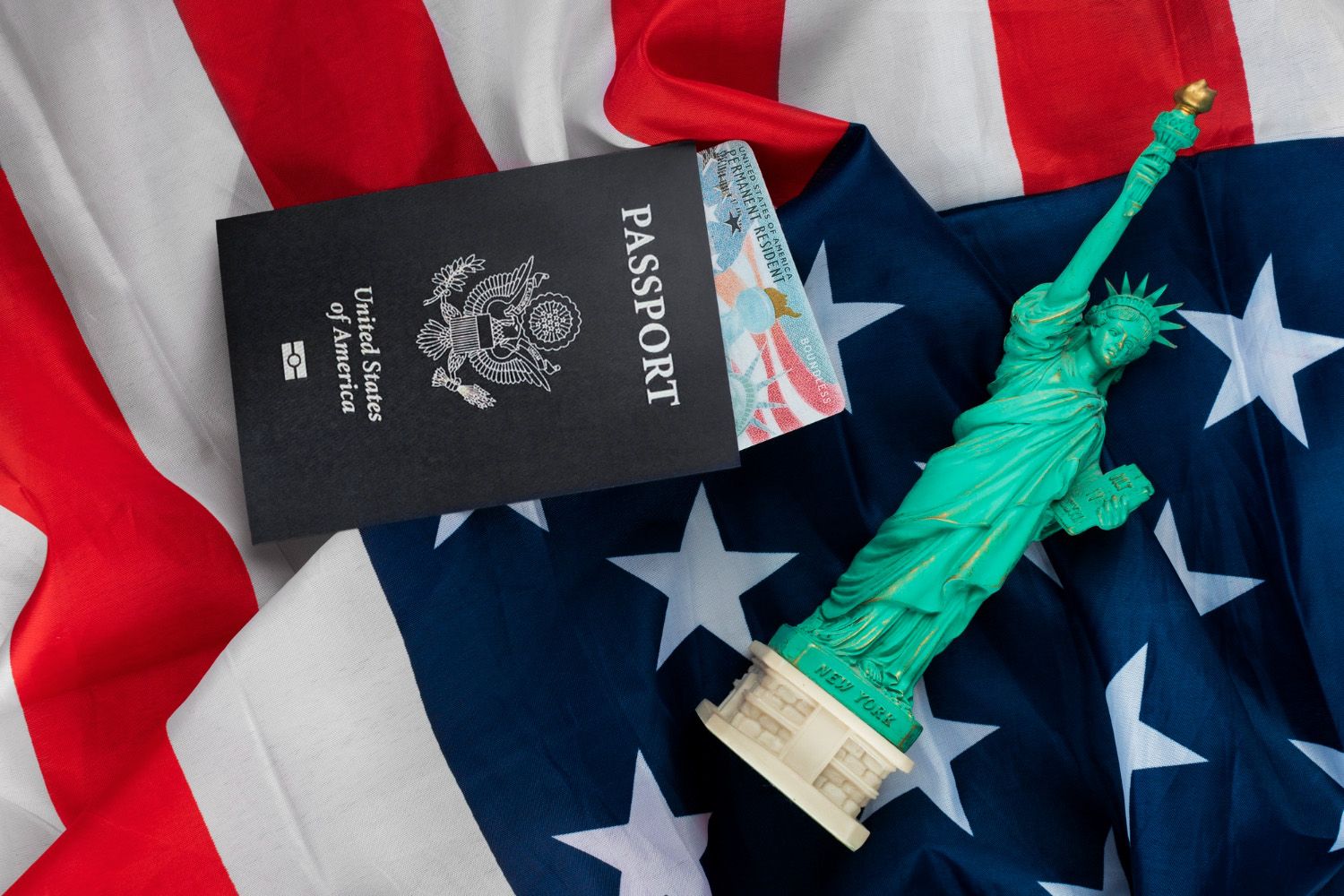Life in the United States is associated with great opportunities, a high standard of living, quality education, and career growth for many. One of the main steps towards achieving this dream is a Green Card—a document that paves the way for permanent residence and legal work in America.
In this article, we will examine in detail what a Green Card is, the rights and obligations it grants, the various paths to obtain one, and also discuss the pros and cons of permanent resident status.
What is a Green Card
A Green Card (official name — United States Permanent Resident Card) is an identity document that confirms a foreign national's right to live and work in the US on a permanent basis. The card holder is not a citizen of the country but gains the ability to enjoy many rights similar to those of citizens.

Historically, the name is associated with the color of the document. In the mid-20th century, it was indeed green, but modern cards are often produced in pinkish-beige tones. Despite this, the term "Green Card" has become firmly established and is still used today.
The document is issued as a plastic card containing a photograph, personal, and biometric data. The card serves both as an identity document and as proof of legal status.
Rights and Obligations of the Holder
The holder of a Green Card receives significant privileges but is also obliged to comply with a number of rules.
Key Rights:
- Residence and Work. The ability to live freely in any state and be employed by any employer without a work visa.
- Legal Protection. A permanent resident is under the protection of federal and local laws.
- Education. Access to US schools and universities. At many universities, residents pay lower tuition fees than international students.
- Social Programs. Under certain conditions, access to benefits, pensions, and Medicare health insurance becomes available.
- Family Sponsorship. The ability to help a spouse and children obtain a Green Card.
- Travel. Permission to leave the country and return (but long trips of more than one year can cause complications).
- Path to Citizenship. After several years (usually 5 years, or 3 years if married to a US citizen), the right to apply for naturalization arises.
Obligations:
- Comply with the country's laws at all levels;
- Pay taxes on time, including income earned abroad;
- Men aged 18 to 26 must register with the Selective Service;
- Always carry the card;
- Notify USCIS of a change of residential address within 10 days.
Paths to Obtaining a Green Card
There are several ways to become a permanent resident of the United States. Each has its own conditions, timelines, and risks.
The US Department of State holds a free lottery annually for citizens of countries with low immigration rates to the US. Registration takes place online in the fall. Winners are chosen randomly, but winning itself does not mean automatic receipt of the card—one must undergo an interview, confirm education or work experience, and provide documents. The chance of winning is extremely small (on average less than 1%), so relying solely on this path is risky.
The most common way. US citizens can sponsor spouses, children, parents, brothers, and sisters. Green Card holders can only sponsor spouses and unmarried children. Timelines depend on the category: from several months to 10–20 years of waiting.
If an American employer is willing to go through the bureaucratic procedure, they can arrange a Green Card for a foreign employee. There are several categories (EB-1, EB-2, EB-3, etc.) that differ in requirements for education, experience, and skills. This path is complex but realistic for in-demand specialists.
One of the fastest but most expensive options. It requires an investment of at least $800,000 in a US project and the creation of at least 10 jobs. In return, the investor and their family receive a conditional Green Card, which can be converted to a permanent one after two years. The main risks are financial losses and the need to strictly prove the legality of the funds.
Suitable for people who have faced persecution based on political, religious, or other grounds. One year after obtaining refugee or asylee status, one can apply for a Green Card. However, this path requires convincing evidence and is very difficult to implement.
Pros and Cons
Advantages:
- The right to live in the US without a time limit;
- Free access to the labor market;
- The opportunity to study at US universities under preferential conditions;
- Access to social programs;
- Protection by the state;
- The possibility of obtaining citizenship;
- The chance to sponsor family members;
- Building a credit history, which opens access to mortgages and loans.
Disadvantages:
- It is not yet citizenship, so there is no right to vote or hold public office;
- Taxation applies to worldwide income;
- Long trips abroad can lead to loss of status;
- The card must be renewed every 10 years;
- Limited sponsorship capabilities (cannot sponsor parents, brothers, and sisters).

Tips for Successful Application
- Determine the most suitable basis for application.
- Gather a complete set of documents in accordance with USCIS requirements.
- Only use certified professionals for document translation.
- Fill out forms carefully, without errors or inaccuracies.
- Undergo a medical examination with an accredited physician.
- Monitor application deadlines and fee payments.
- Track your case status online and respond promptly to requests.
- Prepare for the interview: be honest and confident in your answers.
- If possible, consult with immigration lawyers.
Conclusion
The US Green Card is more than just a plastic document. It opens the path to a new life, with opportunities for work, study, and development in one of the world's most attractive countries. The ways to obtain it are diverse: lottery, family, employment, investment, or asylum. Each option has its pros and complexities, so it is important to prepare thoroughly, study the requirements, and weigh the risks.
The path to a Green Card requires patience, perseverance, and careful attention to detail. But the result is worth the effort: US permanent resident status becomes a reliable foundation for the future and the first step towards American citizenship.





